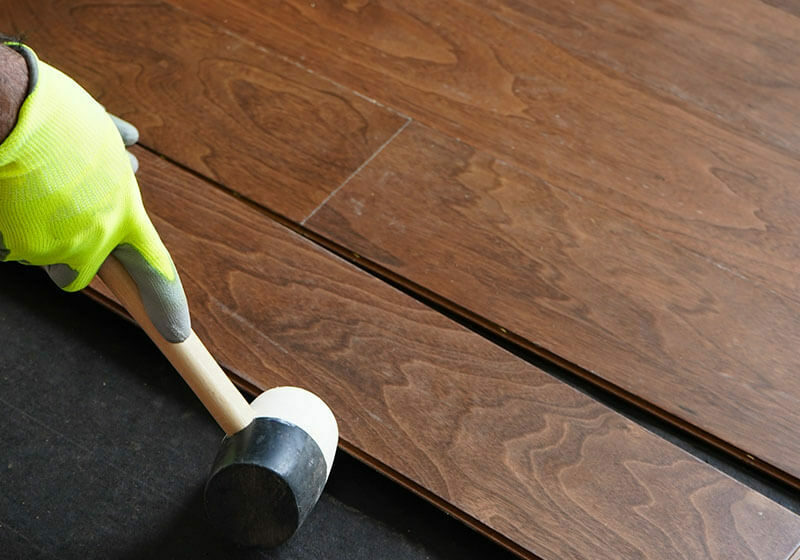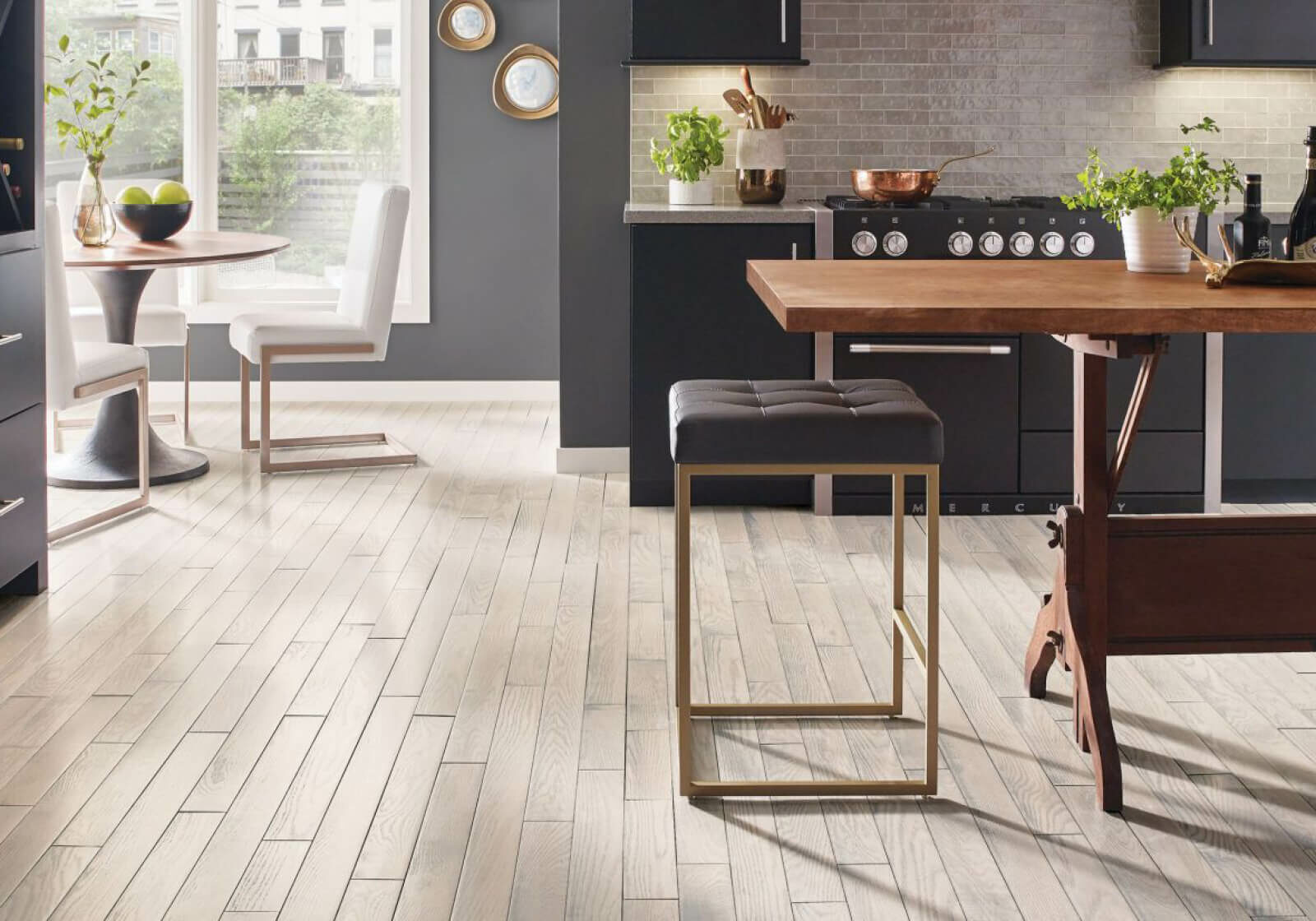Before Hardwood Installation
Before your new hardwood floors are installed, the old flooring must be removed completely. Remove all furniture, furnishings, and items from the room, wall, and closets. Allow at least 1-2 days before installation for the new hardwood planks to be brought in and acclimate to the household temperature and humidity levels.


During Hardwood Installation
It’s extremely important to be home during the days that hardwood installation is taking place to answer questions for your installation crew. Keep kids and pets aways from the rooms receiving new hardwood, as well as the area in your home designated for the installation crew. Your crew will need a space to keep their many tools and saws, cut planks to size, and make adjustments as needed.
After Hardwood Installation
Establish proper ventilation in the home to help the wood finish dry and for the smell to dissipate. Check to see if your doors still have full range of motion with the new hardwood height as you may need to have doors shaved down to swing properly. When returning furniture to the room, carefully bring items back in by lifting them, never dragging them across the floor, and using protectors on the feet of chairs, tables, and furniture.

Hardwood Care
Now that you have new hardwood floors installed, it’s time to keep your rooms looking stunning for as long as possible! The key to being ready for any mishaps that can occur at a moment’s notice is to know the proper hardwood care steps for each situation. From preventative steps and proper regular care to stain removal procedures, it always helps to be prepared. Always refer to the manufacturer's warranty for care instructions.
Visualize your space
It’s never been easier to bring your incredible ideas to life!

